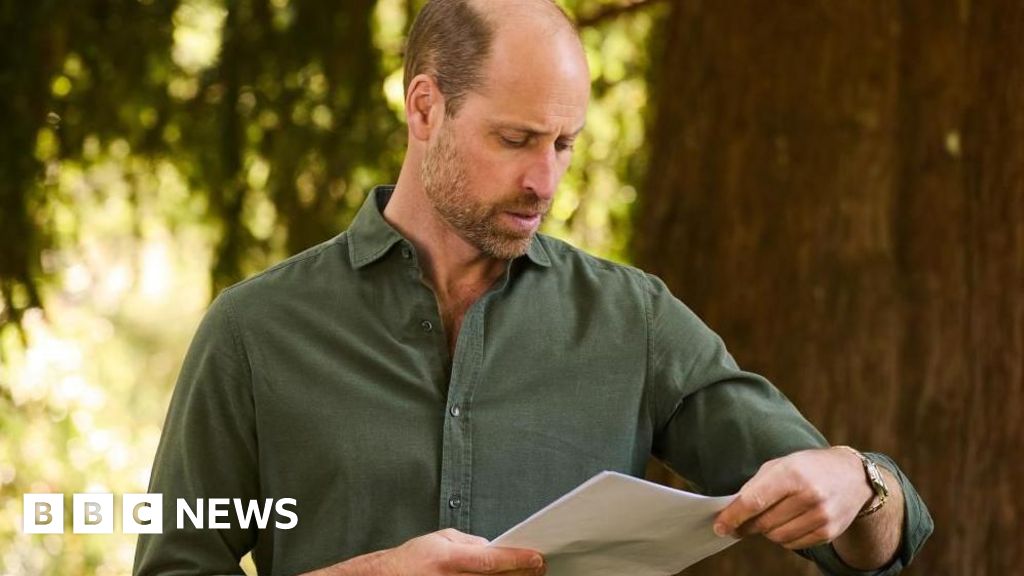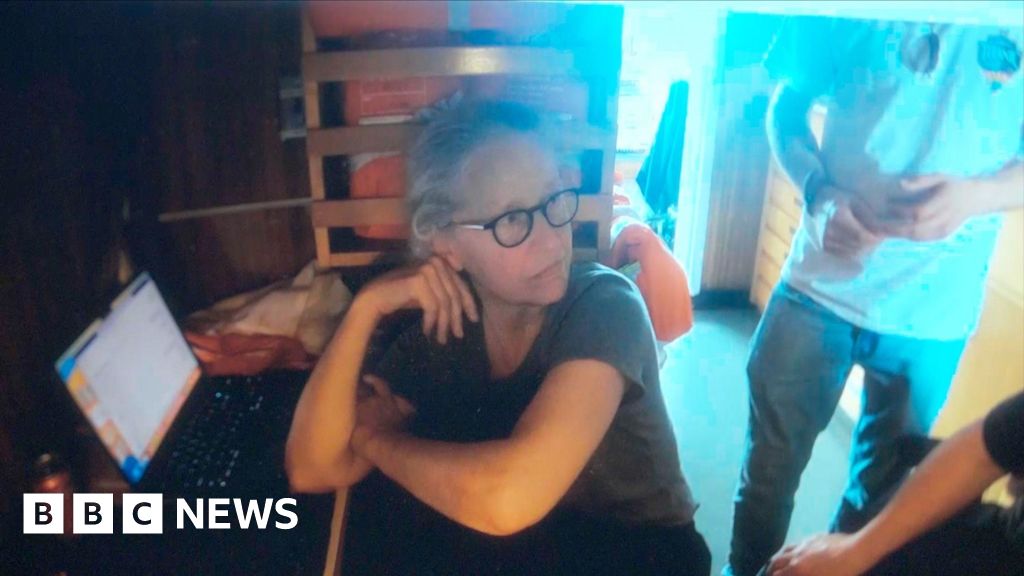ARTICLE AD BOX
By Pallab Ghosh
Science correspondent
Image source, BBC News
Image caption,A hundred metres underground at the heart of the LHC: I'm shown around a ''majestic cathedral to science''
Deep underground amidst the Alps, scientists are barely able to contain their excitement.
They whisper about discoveries that would radically alter our understanding of the Universe.
"I've been hunting for the fifth force for as long as I've been a particle physicist," says Dr Sam Harper. "Maybe this is the year".
For the past 20 years, Sam has been trying to find evidence of a fifth force of nature, with gravity, electromagnetism and two nuclear forces being the four that physicists already know about.
He's pinning his hopes on a major revamp of the Large Hadron Collider. It's the world's most advanced particle accelerator - a vast machine that smashes atoms together to break them apart and discover what is inside them.
It's been souped up even further in a three-year upgrade. Its instruments are more sensitive, allowing researchers to study the collision of particles from the inside of atoms in higher definition; its software has been enhanced so that it is able to take data at a rate of 30 million times each second; and its beams are narrower, which greatly increases the number of collisions.
What all this means is that there's now the best chance ever of the LHC finding subatomic particles that are completely new to science. The hope is that it will make discoveries that will spark the biggest revolution in physics in a hundred years.
As well as believing that they may find a new, fifth force of nature, researchers hope to find evidence of an invisible substance that makes up most of the Universe called Dark Matter.
The pressure is on the researchers here to deliver. Many had expected the LHC to have found evidence of a new realm of physics by now.
Image source, BBC News
Image caption,The Atlas detector comprises 7,000 tonnes of metal, silicon, electronics, and wiring, intricately and precisely put together. It is now more powerful than ever
The LHC is part of the European Organisation for Nuclear Research, known as Cern, on the Swiss-French border, just outside Geneva. As one approaches, it seems an unremarkable complex - blocks of 1950s office buildings and dormitories, sprawling across a two and a half square mile site of manicured lawns and winding roads named after revered physicists.
But 100 metres underground, it is a cathedral to science. I was able to go into the heart of the LHC, to one of the giant detectors that made one of the biggest discoveries of our generation, the Higgs Boson, a subatomic particle without which many of the other particles we know about would not have mass. The Atlas detector is 46m long and 25m high. It is one of the LHC's four instruments that analyse the particles created by the LHC.
It is 7,000 tonnes of metal, silicon, electronics, and wiring, intricately and precisely put together. It is a thing of great beauty. "Majesty" is the word used by Dr Marcella Bona from Queen Mary University of London, who is one of the scientists who uses the Atlas detector for her experiments.
I am awestruck by the view, as Marcella tells me about the improvements to the detector during the LHC's three-year shutdown.
"It is going to be two to three times better, in terms of the ability for our experiment to detect, collect and analyse data," she tells me. "The whole experimental chain has been upgraded."
Amid the clanking and banging of the engineers finishing off Atlas's refurbishment, I find it hard to imagine that something so large is needed to detect particles that are many times smaller than an atom.
The LHC has four such detectors, each one doing different experiments. It is right in the centre of these gigantic detectors that particles known as protons, which are found in the core of atoms, are crashed together after being accelerated close to the speed of light around a 17-mile circumference ring.
The collisions create even smaller particles that fly off in different directions. Their path and energy are tracked by the detector systems, and it is this trail that tells the scientists what kind of particle it is, rather like determining the species and characteristics of an animal from its footprints.
Image source, Cern
Image caption,The collisions create particles that fly off in different directions. The trail tells the scientists what kind of particle it is.
Nearly all the smaller particles arising from the collisions are already known to science. What the physicists here are after is evidence of new particles, which may arise from the collisions but are believed to be created extremely rarely.
It is these undiscovered particles that physicists believe hold the key to unlocking a completely new view of the Universe. Their discovery would create the biggest shift in physics thinking since Einstein's theories of relativity.
Engineers have spent the past three years upgrading the LHC to produce more collisions in a shorter space of time. The refurbished machine has a much greater chance of creating and finding the rarely created new particles. Much of that work has been led by Dr Rhodri Jones, who rejoices in his title of "Head of Beams".
I meet Rhodri in Cern's magnet assembly area, which resembles a vast aircraft hangar. Here, engineers are revamping the 15 metre-long cylindrical magnets that bend the particle beams around the accelerator. This is precision work with absolutely no margin for error.
Image source, BBC News
Image caption,The LHC's magnet assembly area. They have been revamped to make the beam narrower and so increase the number of collisions
Rhodri tells me that his team has made the beams narrower, so that more particles are squeezed into a smaller area. This greatly increases the chances of particles crashing into each other.
"We are looking at very rare processes, so the greater the number of collisions, the greater the chance of actually finding what is going on and seeing small anomalies," he says.
"The improvement in the beam means that for all the physics that we have done since the start of the years the LHC has been in operation, we'll be able to get the same amount of collisions in the next three years as we did in those ten years."
Another big improvement has been in capturing and processing the data from the collisions. In the refurbished LHC, data is collected from each of the four detectors at a blistering rate of 30 million times each second. This is, of course, far too much for a human mind to take in, but any single one of the collisions may contain the crucial piece of evidence of the existence of one of the new particles the scientists are searching for.
The LHC's software has been upgraded so that it automatically searches through all the data collected and, using the latest AI techniques, it identifies and saves the readings that might be of potential interest for the scientists to analyse.
Image source, BBC News
Image caption,The LHC's instruments are more sensitive and will now provide high definition visualisations of the collisions and so better able to detect new particles.
The current theory of subatomic physics is called the Standard Model. Although it has an unimaginative name, the theory has been brilliant at explaining how the subatomic particles come together to create atoms which make up the world around us. The Standard Model also explains how the particles interact via the forces of nature, such as electromagnetism and the nuclear forces that hold the components of atoms together.
But the Standard Model can't explain how gravity operates nor can it explain how invisible parts of the Universe, that physicists call Dark Matter and Dark Energy, behave. Scientists know these invisible particles and forces exist from the movement of galaxies in space - and together they account for 95 per cent of the Universe. But no-one has yet been able to prove their existence and determine what they are.
Image source, Cern
Image caption,The LHC's software has been upgraded to enable it to sift through data at a rate of 30 million times each second.
The LHC was built to detect these particles that might explain how the vast bulk of the cosmos works. Dr Marcella Bona tells me there is now real hope that the upgrades might make that possible.
"It's a really exciting time," she beams. "We've worked for the past three years updating the machinery. Now we are ready."
Marcella has blazed with passion from the moment I met her. But her enthusiasm goes up a level when I ask her if the discovery of a dark matter particle would be one of the biggest discoveries in physics.
"I would say yes," she laughs, eyes widening, "yes absolutely, that would be incredible," she says, allowing herself, momentarily, to revel in the very real prospect of that happening in the coming months.
Image source, Eagle project/Durham University
Image caption,This computer simulation shows dark matter sprawled across the Universe. LHC researchers hope to find it for real
No less excited is Dr Sam Harper, the scientist who has spent the last two decades hunting for the 'fifth force' of nature. He works at another of the LHC's four detectors called CMS, located at the other end of the Cern complex.
Results from LHC before it shut down for the revamp and from several other particle accelerators around the world have found tantalising hints of that fifth force. But with the extra power of the LHC, Sam tells me that his scientific quest may soon be over.
And just like Marcella, the excitement in his voice builds as he says out loud what can't formally be said in scientific circles until there is firm evidence.
"This would upend the field. It would be the biggest discovery of the LHC, the biggest discovery in particle physics since, since..."
Sam pauses, struggling to find the words.
"It'll be bigger than the Higgs".
Cern will be celebrating the tenth anniversary of the discovery of the Higgs Boson later this year. But the festivities draw attention to the fact that the publicly funded £3.6 billion-pound LHC, with its annual running costs of £750,000, hasn't made a really big discovery since. Many had hoped, and some had expected, the most powerful particle accelerator to have discovered dark energy, a fifth force or some other paradigm-shifting particle by now.
There is a lot riding on the results the researchers get over next few years because Cern will soon be putting forward proposals for an even larger hadron collider. The most ambitious plan, called the Future Circular Collider (FCC) would have a ring of 60 miles circumference, that would go under Lake Geneva.
The FCC could cost an estimated £20bn. The current machine has at least another ten years to go, and several more upgrades that will give it even more oomph with which to try to discover the particles that will forever change physics. But the scientific leaders at Cern will be presenting their case for the next phase of particle physics experiments soon. Persuading the governments of member nations to commit to a big increase in funding will be harder if the latest upgrade fails to find even an inkling of the new particles in the next two to three years.
Image source, Cern
Image caption,Cern's proposed Future Circular Collider will be many times larger than the LHC and much more expensive.
Dr Sam Harper confesses to feeling "a little bit terrified" as the LHC embarks on its next set of experiments.
"We are desperately trying to get everything together and we are working really hard to make sure we don't miss any possible new physics. Because the worst thing in the world will be that the new physics is there, and we don't find it."
But overriding Sam's terror is intense excitement about what the next few years hold.
"The thing that drives all particle physicists is that we want to discover the unknown and this is why things like the fifth force and dark matter are so exciting because we have no idea what it could be or if it exists and we really want to find this out."
What might be the first crack in the Standard Model was discovered by researchers at Fermilab, the US equivalent of the LHC earlier this month. Over the coming months and years, researchers at the LHC will be looking to confirm their result and find many more fissures in the current theory until it crumbles to make way for a new, unified and more complete theory of how the Universe works.
Related Internet Links
The BBC is not responsible for the content of external sites.

 3 years ago
75
3 years ago
75








 English (US) ·
English (US) ·